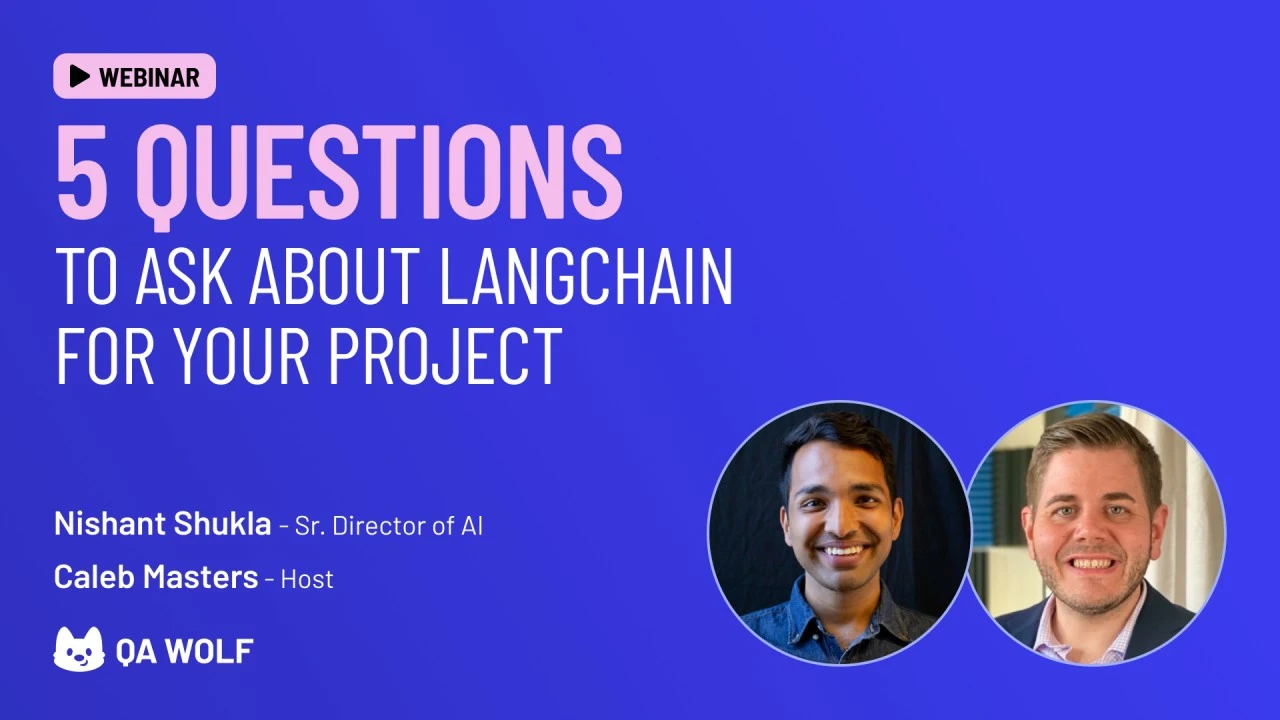Five questions to determine if LangChain fits your project
Note: This blog post is based on an article by QA Wolf. Read the original post here.
 Choosing the right framework for integrating large language models (LLMs) into your project is crucial. LangChain is a popular choice due to its ease of switching between models, handy tool integrations, and a wealth of community resources. However, it’s not a one-size-fits-all solution.
Choosing the right framework for integrating large language models (LLMs) into your project is crucial. LangChain is a popular choice due to its ease of switching between models, handy tool integrations, and a wealth of community resources. However, it’s not a one-size-fits-all solution.
Here are five key questions to help you determine if LangChain meets your project’s needs:
- Will your prompt templates remain relatively stable over time?
- Does LangChain’s built-in monitoring and tracking fulfill your requirements?
- Is limited customization of control flows acceptable for your application?
- Is your agent architecture static and unlikely to change frequently?
- Is your multi-agent framework simple enough to manage without deep customization?
If you answered “yes” to most of these questions, LangChain could be a good match for your project. However, if you require extensive customization, advanced telemetry, or are experimenting with novel agent architectures, you might encounter limitations.
QA Wolf’s Sr. Director of AI Nishant Shukla faced a similar decision. After carefully considering these questions, they chose to develop a custom LLM orchestration framework tailored to their specific needs, allowing for greater flexibility and control over their complex workflows.
In developing their custom solution, QA Wolf leverages Helicone for advanced telemetry. As they explain:
“If you need more control over your telemetry—such as custom visualizations, alerting and anomaly detection, and a usable UX when dealing with large inputs like HTML files—you might find LangChain’s built-in tools limiting. Many teams turn to additional solutions, such as Helicone, to fill these gaps and provide more comprehensive monitoring and analytics capabilities. For projects that require deeper analysis or highly customized tracking, even LangChain’s paid options may not provide the level of control you need.”
Read the full blog post by QA Wolf to learn more about their experience and insights.